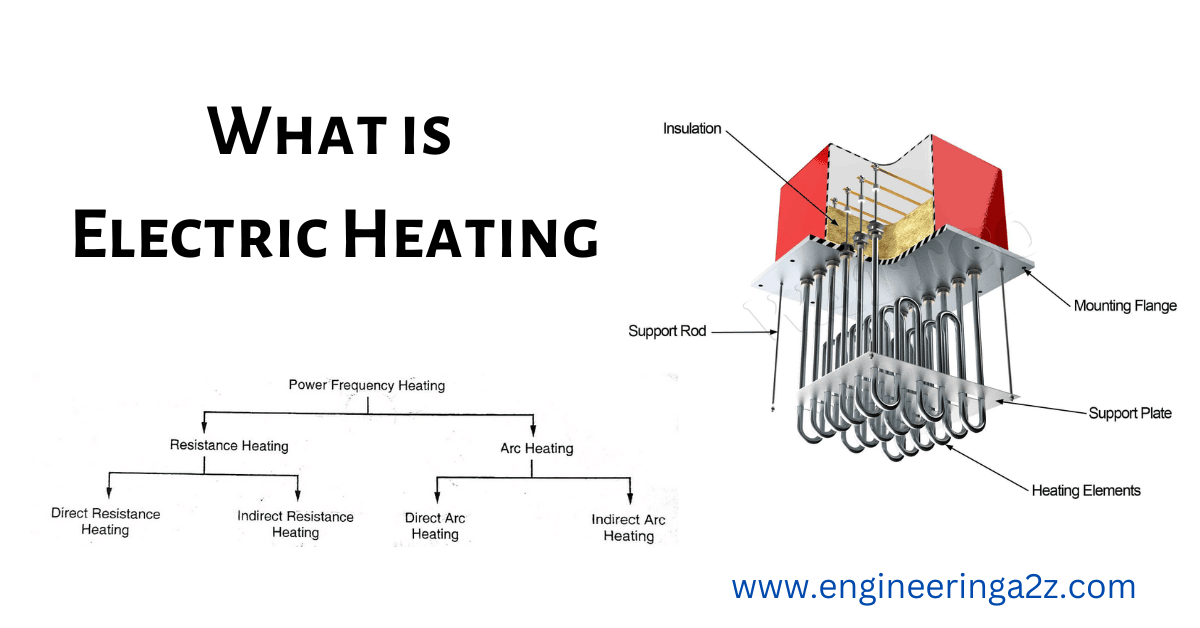
Table of Contents
Electric Heating
Historically, firewood or coal were used to generate heat. Heating is essential in both the home and industrial sectors. Heat is necessary for preparing meals in the home, and heat is required in industry for a variety of activities such as welding, metal melting, drying, hardening, and tempering, and several others. Electric heating systems have replaced traditional means of providing heat by burning wood or coal. Electric heating technologies have various benefits over the traditional methods that were previously employed. Heat is produced by sending electricity through a resistance in electrical heating systems. Heat is produced in household products such as electric irons, room heaters, and geysers by passing current through a high resistivity wire such as nichrome. Now a days all heating requirements can be met with the help of electrical energy.
Read Also
Methods of Heating
Transfer of Heat
In this mode we came to know that how heat transfer from one body to another body. When we heat a body, the heat from the source transfers to the body. There are three different methods of transfer of heat.
1. Conduction
In solids, heat transfer takes place through conduction. The first particle takes heat from the source and is heated. This heat is transferred to next particle. In this way heat reaches to the end of the material.

2. Convection
In fluids, liquids, the heat transfer takes place by convection. In solids, particles do not leave their place, But in liquids, each particle leaves place and comes to the source of heat, receives heat and goes to back his place. After this the next particle moves to the source and after receiving heat takes its place. The movement of particles generate “Convection Currents” in the liquid.
Formulae, H = hxAxΔT

3. Radiation
In this method heat reaches from the source to the object directly without any participation of the medium. Heat from sun reaches to the earth through radiation without heating the atmosphere.

Radiation is governed by the following Stephen Peterson formulae.
H=5.72 x 104 .Kε [(T1 /1000)4 – (T2 /1000)4 ] watt/m2 .
Where , T1 = The temperature of the heating source.
T2 = The temperature of the surface to be heated.
K = Constant called ‘Radiating efficiency whose value depends upon the number of element.
ε = Emissivity
Read Also
Induction Heating and its Types
Methods of Heating
1. High Frequency Heating

2. Power Frequency Heating

Advantages of Electric Heating
- Electric heating is a very efficient method of heating. An efficiency of 80% can be obtained.
- Electric heating can provide uniform heating, the material can be heated through out with same temperature. This is important in many applications specially in Baking.
- By electricity insulating materials like paper, plastic can be heated. This is unique feature of the electric heating. By no other method we can heat insulating (dielectric) materials
- It is a clean method.
- It is a pollution free method. Flue gases, smoke, dirt, dust etc. are absent.
- The electric heaters are easy to control. By simply using switch we can control this heating.
- Electric heating is a safer method. By safety devices we can check overheating, underheating etc.
- Electric heaters need negligible maintenance.
Frequently Asked Questions – FAQs
-
What is Emissivity?
It is defined as the amount of radiation emitted or absorbed by a body compared with a black body under identical condition is called Emissivity
-
Write down Stephen Peterson formula for heating?
H=5.72 x 104 .Kε [(T1 /1000)4 – (T2 /1000)4 ] watt/m2 .
-
What are the methods of Electric Heating?
There are various methods of electric heating :-
1. Resistance Heating
2. Induction Heating
3. Electric Arc Heating
4. Dielectric Heating
5. Infra-Red Heating
6. Microwave Heating











Leave a Reply